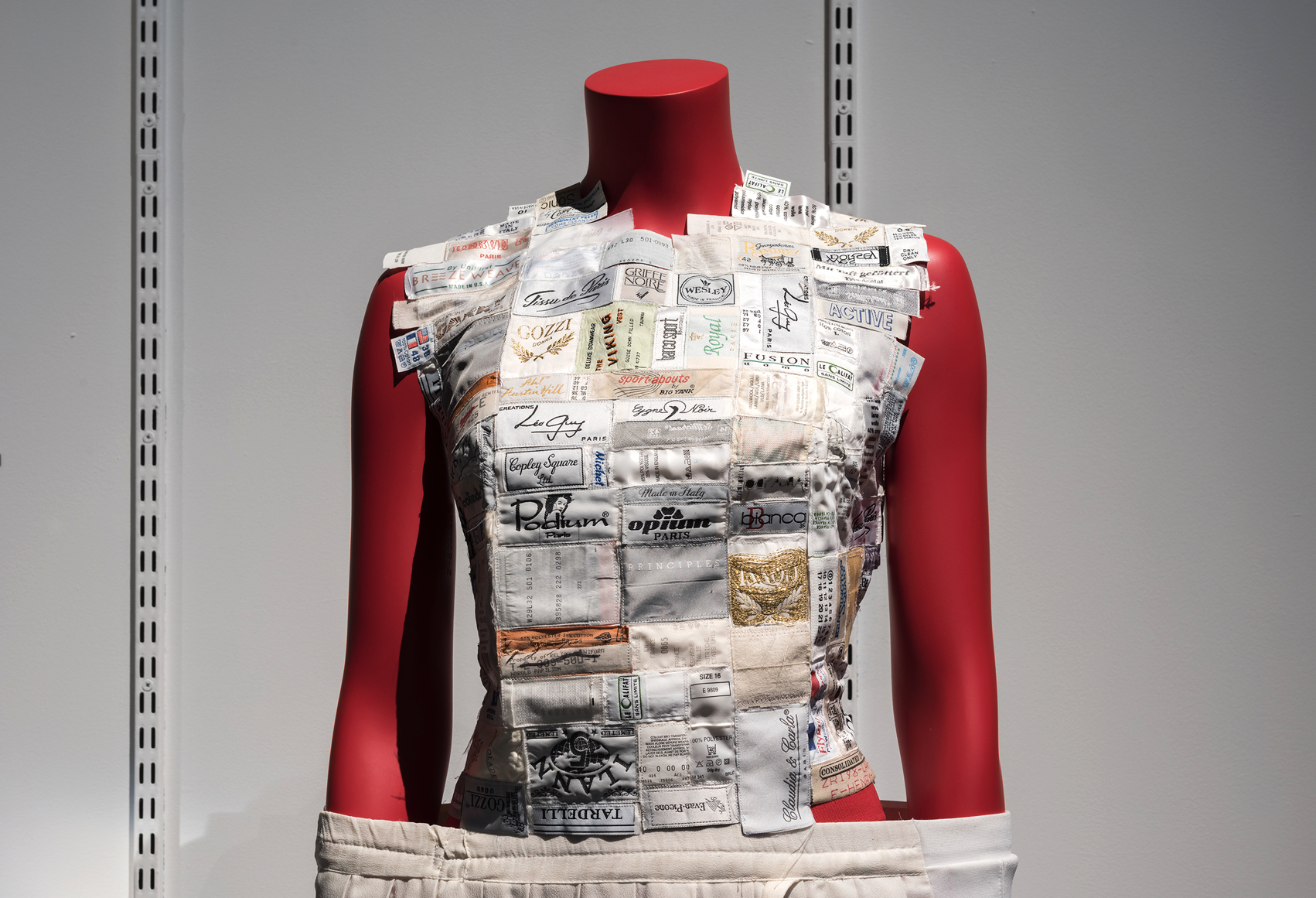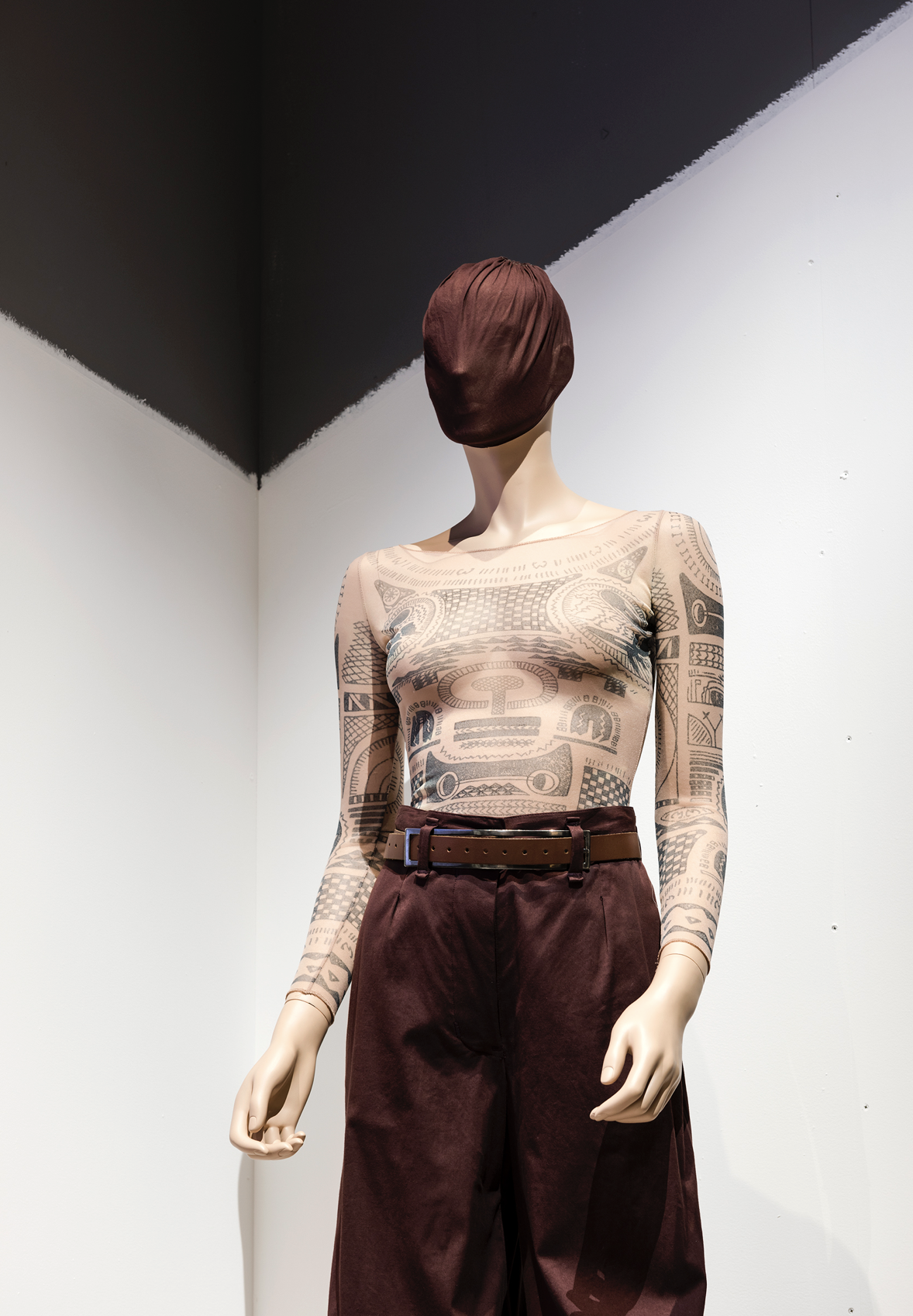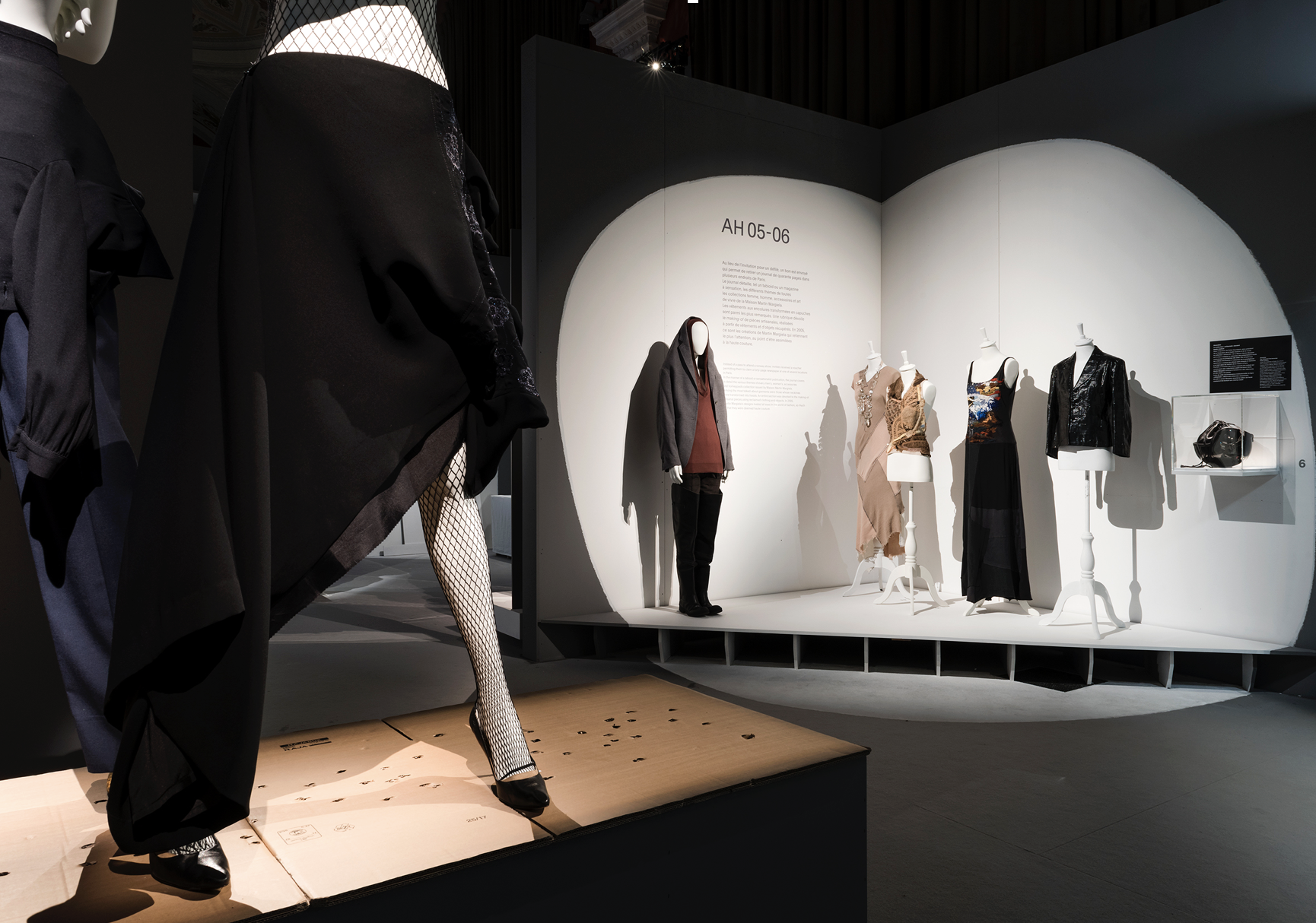Exhibition Review: Margiela/Galliera 1989-2009
Palais Galliera (Paris), March, 3-July 15, 2018
The main aim of Margiela/Galliera 1989-2009 is to convey Martin Margiela’s penchant for questioning both the structure of garments and the structure of the fashion system. As co-curator of this exhibition, he appears, in his typically self-reflexive manner, to push the envelope by questioning what an exhibition is with the support of curator Alexandre Samson and scenographer Ania Martchenko, an architect and longtime friend. While it is fruitful to have Margiela’s stylistic hand in this exhibition to create a curatorial and scenographic vision authentic to his own, it diminishes the possibility for true criticality. As such, onus lies on the visitor to be active in maintaining an objective distance from the exhibition.
The first sign of the exhibition’s self-questioning is obvious: Its entrance is a dominating overhead sign, as if part of a construction site, with the exhibition’s title in plastic coverings. Reminiscent of the façade of Exposition avant travaux (2006) in Hong Kong, it introduces the visitor to the exhibition’s awareness of its own constructedness. Visible structures and assemblages like ladders and plastic coverings litter the exhibition route, and remind the visitor of the exhibition’s temporariness; it is a place in transition and pregnant with possibility. The experience is unhindered by overwhelming text as captions are put aside in an accompanying booklet. Yet the success of this work-in-progress aesthetic is undermined by the display of garments as finished pieces on mannequin displays. Perhaps due to conservation concerns, the garments displayed on mannequins appear complete and thereby clash with the transitional workspace environment. To this end, the exhibition seemed to fall slightly short of being truly provocative since it relies so heavily on conventional fashion exhibition and garment display tropes to be safely understood.
“The exhibition seemed to fall slightly short of being truly provocative since it relies so heavily on conventional fashion exhibition and garment display tropes to be safely understood.”
Speaking of mannequin display, a variety of display techniques – hangers, headless mannequins, wigged and faced mannequins, to name a few – are employed due to Margiela’s stylistic perception of how each garment should be best presented. These conventionally-sized mannequins are in the open while the XXXL tailor’s dummy is displayed is an elevated glass casing. These contrasting display techniques offer a layered understanding - the glass casing upholds the XXXL object (and the marginalized body it represents) as a work of art that aligns with Margiela’s ethos of body diversity, yet, this upholding fetishizes the XXXL object, reinforcing the industry’s normative body type and undermining this initial intention of diversity.
The mannequins displayed in the open however successfully created an intimate environment between the garments and the visitors. Throughout the exhibition, there was only one instance of a rope barrier, which emphasized the general lack of it. Because of the narrowness of the walkway, I was in such close proximity to the displays that I could put my face next to them. I felt myself immersed in the aura of Margiela’s creations, which was heightened by the presence of objects reused from past runways shows. These included white confetti strewn on the floor, the catwalk dropcloth stained with red paint with the models’ footprints, and the cardboard runway punctured by the models’ heels. They formed a sort of well-guided timewarp, enhanced by the intermittent spotlights, to give the sense of existing in a place where the catwalk shows of the past had just concluded. These moments overlapped to manifest what Francesca Granata calls “carnivalized time,” in the most immediate and embodied manner. [1]
The sense of closeness between designer and visitor, peaks at the end of the exhibition when the visitor is invited to walk through an installation. It contains pieces from the Margiela for H&M collaboration and a thank you note from Margiela. It seems that in this instance, the visitor is to experience being in the present with the designer, fully aware of the contemporaneous moment we live in and exit the exhibition with a sense of hope for the future. Yet, the intention of “walking through” seems not fully realized as the installation is constrained behind glass. While a period room- type display in which we can literally have an immersive experience may have been more authentic, the glass windows recall the store window displays for H&M by Martchenko and evoke a similar sense of distance and desire.
Significantly, despite the overall privilege of intimacy with the garments, I found myself conflicted with how I should interact or react to the garments, having been habituated not to touch museum objects. One directly interactive moment was when the Graffiti Tabi Shoe had pens and a small drawing space beside it for the visitor to draw or pen some words. Intentionally or not, the exhibition as workspace – which connotes a hands-on experience – increased the sense of self-surveillance in the invisible barriers we assume when fashion is displayed as art.
The workspace theme stems from another aim of the exhibition, which is to establish the relationship between Palais Galliera and Margiela. A wall text highlights the manner Margiela used Galliera as a study collection space and how his notes led to the creation of his signature small shoulder silhouette that threaded through his creative career. Elevation of Galliera’s status aside, it is apt that the museum began as a study collection under Societé de l’Histoire du Costume. Evidently as a metanarrative of the study collection process and museum as educational space, Margiela’s practice is manifested in the exhibition as workspace concept. Moreover, the exhibition’s chronological order reflects Margiela’s practice of using each collection as a study collection for the next. Following more than one hundred silhouettes, videos, house archives and installations, from the Spring/Summer 1989 to 2009 collections, it is divided into different periods of Margiela’s career that simultaneously unfold the development of his concepts.
Finally, the timing of this exhibition begs to be addressed. Later this month, Margiela, the Hérmes Years will be opening at MAD, and it, too, is art directed by Margiela – a perplexing and awkward overlap. Considering the history of MAD as a museum showcasing France’s industrial innovations that bolster her national identity, it is appropriate that his contribution to Hérmes is exhibited there. Though, to have two concurrent exhibitions in museums with very different missions (plus the fact that MAD had recently concluded their blockbuster Christian Dior, couturier du rêve exhibition) is to spread the Margiela identity across various, sometimes conflicting definitions of fashion. Of course, one must acknowledge the accessibility of Margiela pieces in this moment as a living designer and one of the most popular avant-gardists. Still, this coincidence is questionable.
Perhaps it is all too apt a contradiction that parallels Margiela’s career, in that, despite his affinity for anonymity, it is this very trait that drew the press to him, and that his anti-fashion sentiments secured him a place in one of Paris’ most traditional fashion houses. These paradoxes surface in this exhibition as well, as despite its deconstructionist aesthetic it tends to reinforce the industry’s conventions in some places, such as the prevailing use of traditionally proportioned mannequins to represent a body on which the XXXL garments would otherwise not work. With that said, it could be reflective of the enigma of being a designer today in the fashion system, that one can be simultaneously subverting and at one with the system, and that these ambivalences are bound to show up when you write your history through an exhibition.
Notes
[1] Granata understands Margiela’s inversion and acceleration of time in garments through the Bakhtinian notion of cyclical time in the carnival: “An inverted and topsy-turvy time when temporalities of past, present, and future are reversed and/or thoroughly confused.” For more, see Granata, Francesca. "Fitting Sources - Tailoring Methods: A Case Study of Martin Margiela and the Temporalities of Fashion." In Fashion Studies: Research Methods, Sites and Practices, edited by Heike Jenss, 142-59. Bloomsbury Academic, 2016.





